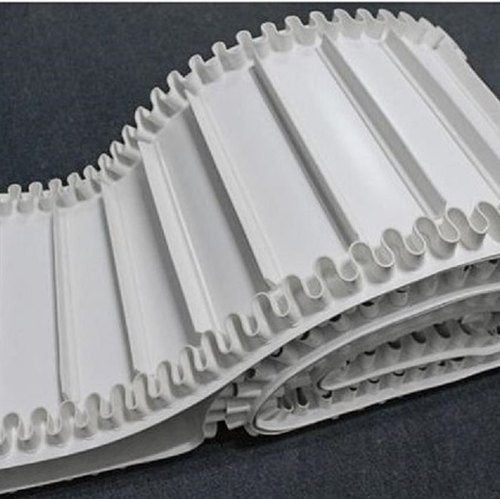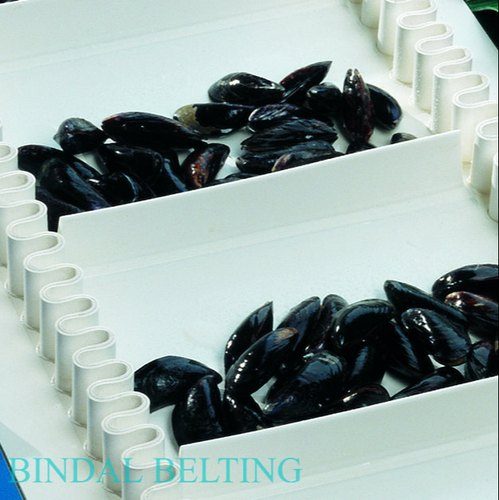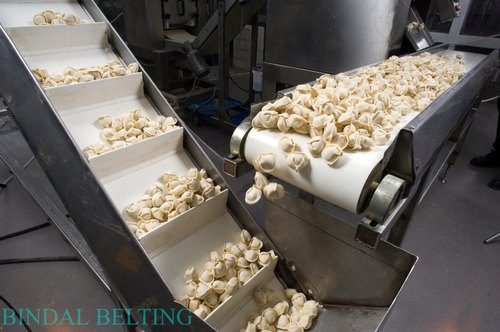


Cleated Conveyor Belts
| Price per Unit | Meter |
| Belt Width | 300 mm to 3000 mm |
| Belt Thickness | 2 – 5 mm |
| Material | PVC |
| Color | Grey |
| Automation Grade | Automatic |
| Brand | DERCO HOLLAND |
| Finishing | Smooth |
| Condition | New |
| Piles | 2 ply – 4 ply |
| Packaging Type | Standard |
**Introduction to Cleated Conveyor Belts:**
– Cleated conveyor belts are essential components in industries requiring the efficient transport of materials over inclined or horizontal planes. These belts feature raised sections, or cleats, that are strategically placed to keep materials in place during transportation. The cleats ensure that even loose or granular materials are conveyed efficiently without slippage, making these belts invaluable in various heavy-duty and light-duty applications.
**Construction and Design:**
– Cleated conveyor belts are typically constructed from durable materials such as rubber, PVC, or polyurethane. The base belt provides a strong, flexible foundation, while the cleats are molded or attached to the belt surface at regular intervals. The cleats can be made from the same material as the base belt or from a more rigid material to handle tougher loads. The design and spacing of the cleats can vary based on the specific needs of the application, with options ranging from low, closely spaced cleats for smaller items to tall, widely spaced cleats for bulkier materials.
**Applications Across Industries:**
– Cleated conveyor belts are utilized in numerous industries due to their versatility and effectiveness in handling various materials. In agriculture, these belts are used to transport grains, seeds, and other agricultural products, ensuring they are moved efficiently without spillage. In the mining industry, cleated belts are essential for moving bulk materials such as coal, ore, and gravel up steep inclines. Food processing plants use these belts to handle products like vegetables, snacks, and baked goods, maintaining their orientation and spacing throughout the production line. Additionally, in the packaging and recycling industries, cleated conveyor belts facilitate the transport of products and recyclable materials, keeping items securely in place during movement.
**Advantages and Benefits:**
– Cleated conveyor belts offer several significant advantages. Their ability to transport materials on steep inclines without slippage is crucial for optimizing space and improving operational efficiency. The cleats ensure that materials remain in place, reducing product loss and increasing safety by preventing items from falling off the belt. These belts are also highly customizable, allowing industries to choose specific cleat heights, shapes, and spacings to suit their needs. Furthermore, cleated conveyor belts are durable and designed to withstand harsh working conditions, ensuring long service life and minimal maintenance.
**Key Parameters for Design:**
– Several key parameters must be considered when designing cleated conveyor belts to ensure they meet specific application requirements. Cleat height and spacing are critical factors that determine the belt’s ability to handle different types of materials and inclines. The material composition of the belt and cleats must be chosen based on the working environment, considering factors such as temperature, chemical exposure, and abrasion resistance. Additionally, the overall belt width and length must be tailored to fit the conveyor system and the volume of materials being transported.
**Conclusion:**
-They are versatile and reliable solutions for material handling in various industries. Their robust construction, customizable design, and ability to transport materials on steep inclines make them ideal for applications ranging from agriculture and mining to food processing and recycling. By carefully considering design parameters such as cleat height, spacing, and material composition, industries can optimize the performance and longevity of cleated conveyor belts, enhancing productivity and ensuring the efficient transport of materials.

